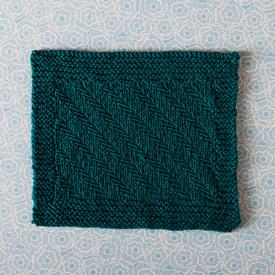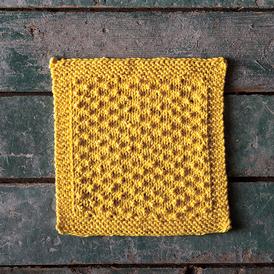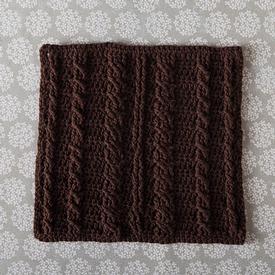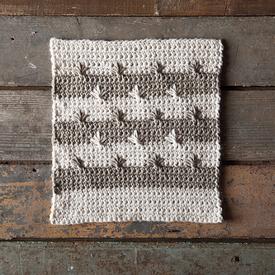Backpacking Tips for Beginners
Being an Outdoor Guide means that everyone asks you questions. Here are some tips and tricks that you can use!
Pick an Experienced Backpacking Partner
Team up with an experienced friend. Knowledgeable company is good for peace of mind, and a shared backpacking experience is usually more fun than going solo. A been-there/done-that companion(s) can accelerate your learning curve by sharing wisdom gained in the field.
Join a group. Group trips (4–6 people, typically) are memory-makers. Most backcountry areas limit groups to 12 (to minimize impact to the land).
Pick an Appropriate Backpacking Destination
You’ll want to consider such factors as your trip’s length and difficulty, as well as any special considerations (hiking with dogs or kids) or interests (wildflowers, waterfalls, history, etc.).
Trip Distance
A one-night trip makes sense for beginners. Keep the round-trip distance to 10 miles or less. It is reassuring to know that civilization is not too far out of reach.
Got two nights? Consider this: Set up camp on the first night, use the next day to relax or take a day hike to somewhere nice, then return to your base camp that night. This way you’ll tote a full backpack on just two days.
Trip information
There are several good sources of trip information.
Guidebooks: Some authors rate trips for scenic quality—very helpful for picking a prime trail. Their 5-star locales usually attract crowds, so don’t expect solitude unless you visit midweek.
Websites, magazines: Hiking websites abound and can be good resources, though reliability can vary. Magazines are solid sources, and some national parks and forests maintain online trail-condition reports, too.
Well-traveled friends. They can point you to destinations that match your tastes and abilities.
Park services: You may be able to find information from park rangers or park websites in the area you're interested in exploring.
Choose Your Backpacking Gear
The 10 Essentials: It’s a time-tested assortment of wilderness travel gear that ensures you have the basics for safety and comfort and equips you to handle emergencies. You may never refer to your compass or use firestarter—two of the Essentials—but it’s good to carry them, just in case.
Not really roughing it. Many comforts of home also come in impressively lightweight backpacking forms: stoves, cushy sleeping pads, camp pillows.
Think light. It's easy to over-pack. Yes, bring a camera, toilet paper, headlamp and sunscreen. But maybe skip the lantern, the paperback and that third water bottle (bring a water filter instead and resupply as you go). Aim for a pack weight that’s manageable. Say, around 30 pounds.
Borrow or rent. Try out big-ticket items (bags, tents) before making a purchase so you better understand your preferences.
How to Choose and Pack a Backpack
Here are some brief guidelines:
Capacity. The number in pack names refers to the pack’s volume in liters. A common size for weekend trips (1–3 nights) is 35–50 liters. Multiday trips (3–5 nights) require packs of 50–80 liters. For longer trips, or if you’re toting a lot of winter or kids’ gear, choose 70 and higher.
Size: Backpacks are sized according to torso length, not a person’s height. If that’s not practical, you can get a friend to measure your torso length, determined by measuring the distance between the top of your hips to your C7 vertebrae—that bony protrusion near the base of your neck.
Loading and adjusting a pack. A backpack is designed to carry most of the load on your hips while your shoulders carry less. Keep heavy gear close to your back and near your shoulders.
Base layer. Sweaty cotton takes forever to dry, so choose a “technical” fabric, such as moisture-wicking polyester or wool, for your underwear and long underwear.
Pants or shorts. Convertible pants are popular. Their lower-leg portions can zip off if you want more air and sun.
Footwear. Full- or mid-cut boots are traditional backpacking choices, though some folks prefer hiking shoes or even trail runners. Tennis shoes and urban/athletic footwear are too flexible for roots and rocks on trails. Sandals for lounging in camp are a nice luxury if you don’t mind toting the weight.
Socks. Avoid cotton. Wearing cotton on the trail is asking for blisters. Choose wool or synthetic hiking socks in a weight or thickness compatible with your footwear.
Head cover. Brimmed hats, caps, Buffs, bandanas—it’s smart to shield your scalp from all-day sun exposure. Bring ample sunscreen for exposed skin.
Outerwear. Even if dry weather is forecast, a rain jacket keeps bugs off your arms and torso while in camp. An insulation layer (jacket or vest) wards off chills early or late in the day.
Dinner. For simplicity, choose freeze-dried food that requires just a few cups of boiling water and 10 minutes of wait time. Gourmands or those with access to a food dehydrator can make more creative trail meals.
Rest of the day. Some backpackers take time to cook breakfast; others save time with ready-to-eat items. Lunch can be a meal or several breaks for snacks such as trail mix, jerky, dried fruit, chunks of cheese and energy foods (bars, chews and gels).
Coffee. Lightweight French coffee presses do, in fact, exist.
Food storage. Never leave food lying around unattended. You’ll likely lose it, and animals become less inclined to forage in a natural manner again. Carry a food canister or learn how to hang food to protect your edibles (and any aromatic items) from critters.
Adjust your expectations. You’ll travel slower and over shorter distances, but done right (with compassion and patience) you can cultivate a love for outdoors adventure in your little ones.
Teach respect for the land. Encourage kids to stay on trails and not cut switchbacks. Ask them not to pick flowers, tag rocks or carve their names into tree trunks.
Communication and Electronics for Backpacking
Do not count on getting cell phone reception in wilderness areas. Cell towers can be found near visitor centers at a handful of national parks, but in the backcountry, cell reception is rare.
Other communication options include satellite phones (pricey, but your best bet if on-demand access to civilization is a must),satellite messengers (capable of transmitting 1-way or even 2-way text messages), 2-way radios (best for groups spread out over a large area; average range is 2 miles) and personal locator beacons (for sending a distress signal).
Portable power sources (such as solar chargers) can generate enough energy to fully charge a smartphone.
Practice at home or a campground. Pitch your tent in your backyard. Inflate your sleeping pad. Light your stove. Check out your headlamp. Know how things work in a comfortable place before you’re under pressure in an unfamiliar setting.
Call ahead. Avoid surprises. Contact a ranger office at or near your destination. Ask about road closures, trail conditions, permit requirements, animal activity or any temporary restrictions.
Share your plans with a friend. Leave an itinerary with a friend who will remain in town. If you don’t return by the appointed time, your friend can notify rangers that you may need help.
Remember an acronym favored by the Emergency Response Institute of Olympia, Wash.: S-T-O-P. Stop, Think, Observe and Plan.
Stop: If you feel uncomfortable with your situation, don't go any farther. Don't panic, either. The rule changes if the area is unsafe or someone in your group needs medical attention. Count to 10, drink some water or eat a little food. These acts often give you a fresh perspective and help you better assess your situation.
Think: Where were you when you were last certain of your location? Can you navigate back to that point? Can you hear or see helpful landmarks like a road or trail? If so, carefully return to that spot and reevaluate your options.
Observe: Put your senses on full alert. Picture in your mind all distinctive features you spotted as you came to your current position. Can you use them as waypoints to guide you back to a place where you were confident of your location? If so, return to that spot. Can you connect with a known trail from that point? Do so. If not, stay put. It's easier for rescuers to find you near your original line of travel.
Plan: If you are with others, talk over a plan. If not, it can be useful to say the plan out loud as if you were explaining it to someone else. If it makes sense, then follow your plan. If not, revise your plan. If the situation changes as you follow that plan, use "STOP" again to improve your chances for a safe recovery.
"Pack out what you pack in." It’s an old phrase but still valid, along with “Take only pictures, leave only footprints.” In the wilderness, no one cleans up after you. So be relentlessly tidy. Pick up every wrapper, tote out every orange peel. Any item that does not originate in the wilderness, even an apple core, should not be left there. In some backcountry areas, that includes toilet paper. Learn about Leave No Trace principles so wilderness scenery perpetually looks untouched and inviting, just the way you want to see it.
Understand the backcountry is wild and unpredictable, not a theme park. In the wilderness, you’ll find no handrails, no courtesy phones, no attendants, no flush toilets, no water fountains, no snack bars. It’s a potentially dangerous place. That’s part of its appeal—wild lands are a different world. Self-reliance is a vital skill for appreciating them. Be aware that you’ll need to adapt to the unexpected.
This ain’t no disco. Realize most people head to the wilderness for peace and serenity—an escape from the noisy urban norm. Have fun; just please self-regulate your noise level.
Ultimately, relax and enjoy. Stay committed to being nice to fellow backpackers, the animals and the land. Breathe deeply, soak in the views and immerse yourself in a whole new world.
Article and others like it found at REI.com








